#phyla challenge
Text
Funky sapient creatures of assorted phyla
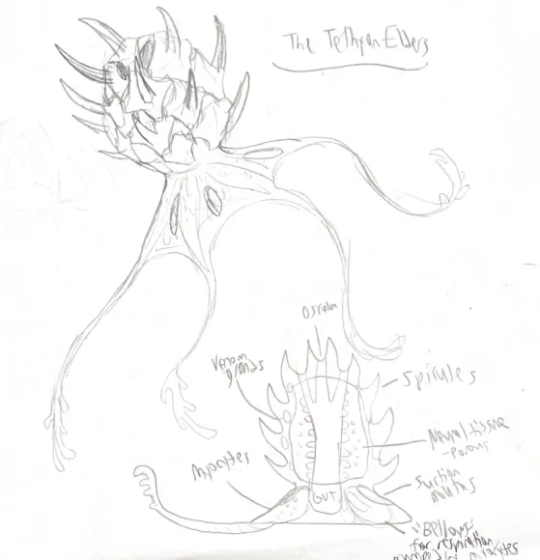
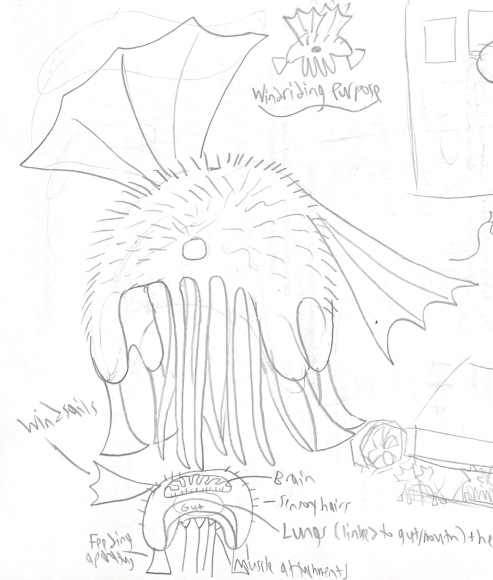

Doing @dimetrodone's 30-day phyla challenge, very very late!
Also, for fun, I was inspired by @danbensen's Fellow Tetrapod, so I sort of crossed the two concepts together and decided to make an alternate-timeline sophont for each phylum on the list.
So! Starting off:
- The Tethyan Elders: Sapient sea sponges. Mostly brain, they're highly intelligent but think slowly. The soft brain is protected by spicules, armed with venom glands. Their civilization has existed for 5 million years, and they fashion decor out of the skeletons their ancestors leave behind. Generally pacifist.
- The Windriding Purpose: Sapient placozoa in a timeline where they evolved dominance. Their brains are entirely mechanically powered, a complex maze of fluids and cilia. A minor change in environmental conditions leads to a shifting of fluids and moving cilia, and hence thought. They are like strandbeest in that they're mostly wind-powered. The fact that the environment can influence thought has led to some very concerning "mind-manipulation" research by various Purpose governments.
- The Bodies Whom Lurk: Intelligent freshwater comb jellies that breathe through gills/their skin like amphibia. Their nervous system is made of fused cells and is decentralized. They are blind. They've been using giant mirrors, constructed via remote-control rovers, to reduce the albedo of the planet, lowering Amazonian temperatures to something generally more Yangtze-like. Inevitably, this led to ecological disaster.
39 notes
·
View notes
Text
Official Phylum Bracket!
Below is the official matchup list for the Phylum rounds!
There are 33 phyla in the Showdown lineup, so after the polls close on Round 1, the winner of Xenacoelomorpha vs. Hemichordata will go up against Micrognathozoa in Round 1.5 before we move on.

How this bracket was created:
After assembling the list of phyla, I ranked them based on my best guess of how they would perform in the polls. I then split the list into the Top 16 and the Bottom 16 (minus Micrognathozoa), and created a bracket for each half using this site. I split up the list because it felt unfair not to give the less charismatic phyla at least a chance to compete! I've been affectionately calling the Bottom 16 matchups the "Micro-Royale" :) From there, I created a new bracket, alternating matchups between the Top 16 and Bottom 16.
Since Tumblr is probably going to crunch the image quality, the bracket matchups are listed in text format below the Keep Reading.
Round 1:
Round 2:
Arthropoda vs. Brachiopoda
Priapulida vs. Placozoa
Platyhelminthes vs. Onychophora
Loricifera vs. Gastrotricha
Annelida vs. Nematoda
Cycliophora vs. Gnathostomulida
Phoronida vs. Cnidaria
Dicyemida vs. Chaetognatha
Mollusca vs. Bryozoa
Nematomorpha vs. Orthonectida
Nemertea vs. Ctenophora
Acanthocephala vs. Tardigrada
Echinodermata vs. Porifera
Rotifera vs. Kinorhyncha
Entoprocta vs. Chordata
Xenacoelomorpha vs. Hemichordata
>> (Micrognathozoa will challenge the winner of this matchup)
Arthropoda vs. Placozoa
Onychophora vs. Loricifera
Annelida vs. Cycliophora
Cnidaria vs. Chaetognatha
Mollusca vs. Nematomorpha
Ctenophora vs. Tardigrada
Echinodermata vs. Rotifera
Chordata vs. Micrognathozoa
Round 3:
Arthropoda vs. Onychophora
Annelida vs. Cnidaria
Mollusca vs. Ctenophora
Echinodermata vs. Chordata
98 notes
·
View notes
Text
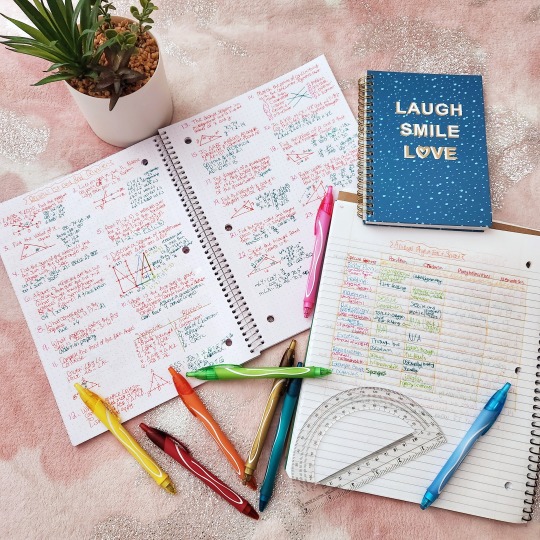
Wednesday, May 8, 2024
All of this review lets me see how much I have learned in my first year of high school, but at the same time, cumulative exams are NOT fun. There is SO MUCH information! And I'm still learning more information in Biology and World History! I mentioned this in yesterday's post, but my piano harmony and theory exam is on Friday, and I am much more worried about that than the practical! Almost done, almost done. And the best present of all during finals week, Julien will be home! He's taking his finals right now, and I'm not sure if he'll be coming back over the weekend or early next week. He won't tell me. He's going to get squished like my squishmallows. He better be ready for it!
Tasks Completed:
Geometry - 1st and 2nd quarter review
Lit and Comp II - Reviewed Units 7-9 vocabulary + read the news + + worked on non-fiction writing assignment (due next Thursday) + CLEP Test practice question + reviewed final study sheet
Spanish 2 - Reviewed Los Artes vocabulary + reviewed more on the preterit and imperfect
Bible I - Read Matthew 21
World History - Typed up a short essay about a current female leader and her accomplishments (I went with Kaja Kallas who is the Prime Minister of Estonia because she was in the last docuseries I watched as an interviewee, and she seemed interesting)
Biology with Lab - Learned about some phyla of invertebrates + filled in graphic organizer chart (first two sections) + continued germination lab
Foundations - Read more on virtue + completed the next quiz on Read Theory + worked on the outline for my argumentative speech
Piano - Practiced for two hours in one hour split sessions
Khan Academy - Completed High School Geometry daily mastery challenge + completed High School biology daily mastery challenge + completed World History Unit 1 test (89%)
CLEP - Completed Sample CLEP Test Questions 61-75
Streaming - Watched The Cuba Libre Story Episode 8
Duolingo - Studied for approximately 30 minutes (Spanish, French, Chinese) + completed daily quests
Reading - Read pages 229-274 of Into the Bright Open by Cherie Dimaline and finished the book
Chores - None today
Activities of the Day:
Personal Bible Study (Romans 8)
Ballet
Variations
Journal/Mindfulness
#study blog#study inspiration#study motivation#studyblr#studyblr community#study community#study-with-aura
22 notes
·
View notes
Text
John's finally cracked open Colonel Sassacre's Daunting Text of Magical Frivolity and Practical Japery, and well... it seems daunting!
Hell's bells, we are having a mighty sporting time of it!
Hold fast my intrepid fellow prank-smiths! We've merely nicked the mahogany of our japing chests.
If I may direct the incisive ogle of your beagle puss to the wriggling regency of rubber bugs, plastic parasites, squirming serpents, pliable pests, and every such order and phyla of creepy-crawlie!
Land sakes alive, we are cooking with petrol now! (MSPA page 1969)
We have here an absurd parody of old-timey language that would certainly challenge the average modern 13 year old's attempts to interpret it. The Colonel himself is clearly based on famed American humorist Samuel Clemens aka Mark Twain, judging by the illustration--
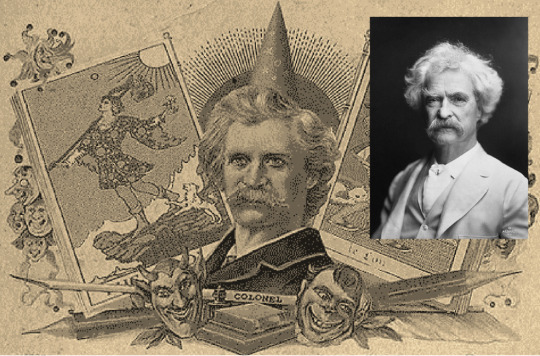
--and this excerpt from the text:
Do you have a bothersome aunt who never seems troubled to find ways with your sunny afternoons? A broad, splintery fence - a bucket of whitewash, perhaps? (MSPA page 1969)
This is a reference to the fence-whitewashing episode in The Adventures of Tom Sawyer, which I'd already read by the time I was John's age, thanks to my father's commitment to the classics of American literature being nearly equal to Dad Egbert's passion for harlequins. Tom tricks his friends into doing the task his aunt had set for him and paying him for the privilege with marbles and other small items, including a dead rat on a string--a superb example of practical japery, I think you'll agree.
But wait--how can Colonel Sassacre be Mark Twain, when Mark Twain was mentioned just a few pages ago?
"The moon's an arrant thief, and her pale fire she snatches from the sun." -Mark Twain
You are almost certain Mark Twain said that. (MSPA page 1950)
Mark Twain did NOT say that--as @homestuckredo pointed out the other day, the quote is from Shakespeare's Timon of Athens. Nevertheless, Mark Twain evidently existed in the Homestuck universe. Was Colonel Sassacre another pen name, or perhaps a less successful contemporary of his? And what is his importance to the Egbert family, that John should treasure an obscure and old fashioned tome that also happens to have been involved in the death of his Nanna?
6 notes
·
View notes
Note
Hey, so there's a post of yours that's six years old, a picture you didn't have the focus to colour; mind if I take a swing at it? From the "30 day phyla challenge", "arthropoda".
Oh wow, I just got this. Sorry if this has been sitting a while
Thank you for asking and yes! Knock yourself out!
Just link me to it when you're done please, I want to seeeee
7 notes
·
View notes
Text
Genomes of enigmatic tusk shells provide new insights into early Molluscan evolution.
Accurate phylogenetic trees are fundamental to evolutionary and comparative biology, but the almost simultaneous emergence of major animal phyla and diverse body plans during the Cambrian Explosion poses major challenges to reconstructing deep metazoan phylogenetic relationships.
This is particularly true for the second largest phylum, Mollusca, whose major lineages originated in the Cambrian…
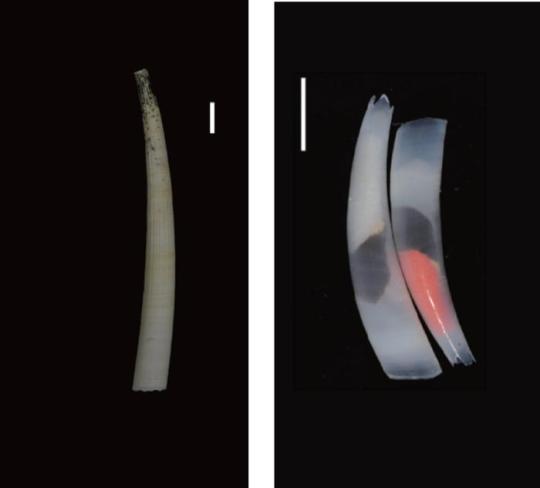
View On WordPress
0 notes
Text
Insects and Humans on the Tree of Life
INSECTS & HUMAN AFFAIRS: PESTS, PLAGUES, POLLINATORS AND POISONS. vacheresse7
600 million years have elapsed since humans and insects shared their last common evolutionary ancestor.
striking similarities still
comparing and contrasting the ways that humans and insects handle the same basic challenges - breathing, eating, growing ect.
taxonomic classifications-
Taxonomy is the branch of science concerned with naming, describing, and classifying all living organisms.
taxa or groups based on shared characteristics. unique taxonomic address
taxonomic groups represent a shared evolutionary history
However, we must keep in mind that living organisms, unlike nails and screws in a hardware store, cannot be easily binned and sorted.
sometimes two very closely related organisms might look, act, and behave very differently - cows and manatees
various characteristics that are unique to insects (and other arthropods)
both humans and insects have bilateral symmetry, three cell layers, and a body cavity. despite being of separate phyla
“arthropod” literally means jointed (arthro = joint, as in arthritis) foot (pod = foot, as in podiatrist).
exoskeletons
segmented bodies - into discrete units.
worm not arthropod
Class Arachnida - spiders, scorpions, ticks
Malacostraca - crabs, shrimp, and lobsters.
Diplopoda and Chilopoda - Classes Diplopoda (millipedes) and Chilopoda (centipedes) are morphologically similar
Class Insecta - dragonflies, grasshoppers, stink bugs, beetles, butterflies, mosquitoes, bees and wasps.
Class Mammalia -bodies are covered with fur or hair instead of scales or feathers, our middle ears contain three bones, and we have a region of our brain called the neocortex or forebrain
Shared Characteristics Between Insects and Humans
1.) Eukaryotic - cells have nucleus
2.) Heterotrophic - cant produce own food, consumers not producers
3.) Multicellular - more than one cell
4.) Bilateral symmetry - A condition in which the right and left sides of an item are mirror images of one another.
Differences Between Insects and Humans
1.) Protostomes (first opening in the embryo becomes the mouth) vs. deuterostomes (the first opening in the embryo becomes the anus (people))
2.) Type of skeleton
3.) Number of body regions
4.) Number of legs
1 note
·
View note
Text
Phylogenomics suggests that larvae are ancestral in polyclads, but not homologous to the trochophore
Platyhelminthes (flatworms) are a diverse invertebrate phylum that are useful for exploring life history evolution. Within Platyhelminthes, only two clades develop through a larval stage: free-living polyclads and parasitic neodermatans. Neodermatan larvae are considered evolutionarily derived, whereas polyclad larvae are hypothesized to be retained from the last common ancestor of Platyhelminthes - and Spiralia - due to ciliary band similarities among polyclad and other spiralian larvae. However, larval evolution has been challenging to investigate within polyclads due to low support for deeper phylogenetic relationships. To investigate polyclad life history evolution, we generated transcriptomic data for 21 species of polyclads to build a well-supported phylogeny for the group. We then used ancestral state reconstruction to investigate ancestral modes of development (direct vs indirect) within Polycladida, and flatworms in general. The resulting tree provides strong support for deeper nodes and we recover a new monophyletic clade of early branching cotyleans. Early branching clades of acotyleans and cotyleans possess diverse modes of development, suggesting a complex history of larval evolution in polyclads that likely includes multiple losses and/or multiple gains. Our ancestral state reconstructions in previous platyhelminth phylogenies also suggest that larval similarities between flatworms and other phyla are most likely convergently evolved http://dlvr.it/STwnRs
0 notes
Photo

#dimetrodone#phyla challenge#day 23 : nematomorpha#nasique#worm#the Unknown#goblinoid#monkey#chimera#130#octem 17#aqva 1
2K notes
·
View notes
Photo
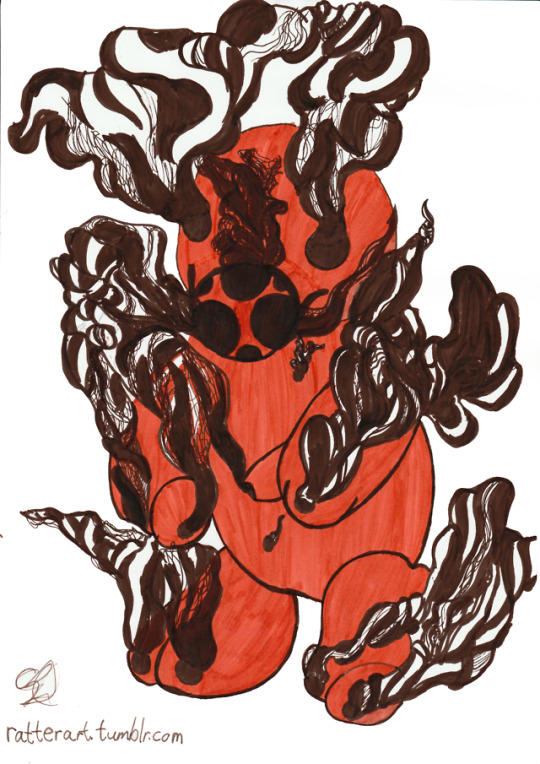
Inktober day one. Poisonous.
Plakortis Simplex. part of the Porifera Phylum. Has a harder exterior than most other sponges with “breathing holes” to let micro particles in as they are filter feeders.
I am doing Inktober prompts and dimetrodone’s 30 days phyla challenge for oktober.
#30 day phyla challenge#phyla challenge#plakortis simplex#inktober#inktober 2018#poisonous#ratterart
1 note
·
View note
Text

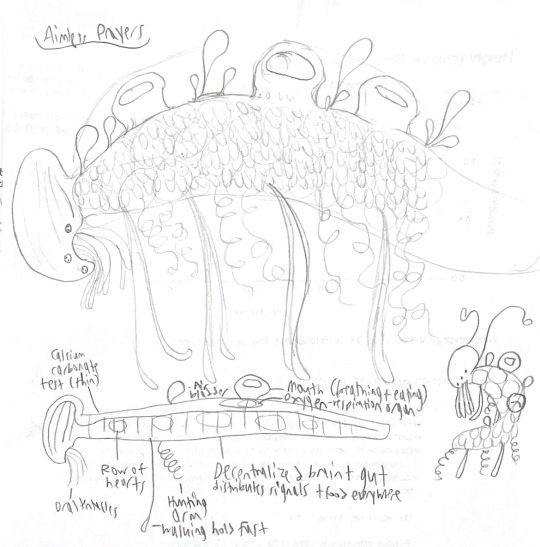

More sophonts for the phyla challenge!
- The Sylvans, terrestrial orthonectids with a vaguely plantlike life cycle. On this earth, they filled the role that plants did on ours, forming a collective entity out of a small grove of near-sophont individuals. They prefer to stick to themselves, as they have enough company with each other.
- The Aimless Prayers, sapient siphonophores and a true hivemind, each organism acting as a slightly more complex cell powering a full decentralized brain. They’re nearly planktonic, which is unique for a sophont, and many are highly religious, hoping that fate and the current sweep them on the right path.
- The Pact of Weathering the Storm, sophont arrow worms originating around the Arctic circle. Their main governing body is a mass of loosely intertwined herds, although as with most sophonts, the specifics can vary and be interpreted in any number of ways. The individual pictured here is walking a pet “reptilian” “dog”.
8 notes
·
View notes
Text
Redrawtober part 6: some girlfriends!
The original Phyla-Vell and Heather Douglas back in 2015, and the new ones in October 2021 (and I didn't post this one until 2022 life is hard).
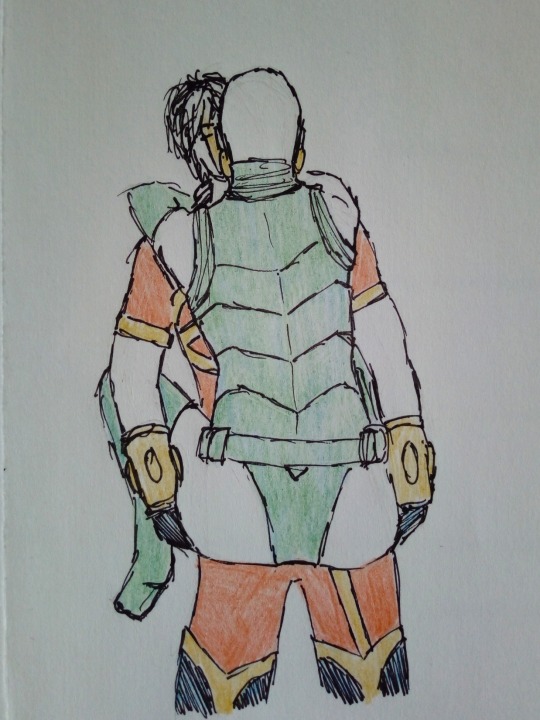

I wanted to put the new ones because first, their designs are cool, and second, it's a way to show that a lot of things can change but others don't.
#the og one is a mess i know but it looked cute!#i used an adorkastock pic for the new one because at first i didn't want to repeat the pose and i was looking for other ideas and found it#it's the same pose! in a different angle. i had to use it#fanart#traditional#marvel#old stuff#guardians of the galaxy#gotg#redraw#challenge#redrawtober#Phyla-Vell#Heather Douglas#Quasar#Moondragon
15 notes
·
View notes
Photo
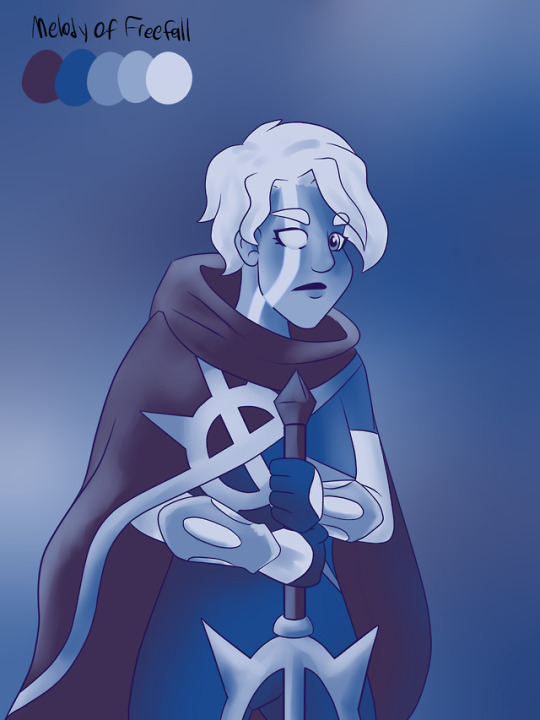

Palette Challenge 3: The Search for Art!
This was the first prompt I received back when I posted the meme in January, and it was the first one I tried to do. But somehow I just got artblocked and that kept me from trying for months. But now I’m getting back into it so I started over and I did it! This palette has a nice cool feel to it. I liked the asymmetry and starbursts in this design for Phyla, so that’s what I went with.
8 notes
·
View notes
Photo

30-day phyla challenge day 11: micrognathozoa
i should do pride versions of these periodically
i love these cool trans booger worms
#art#my art#artists on tumblr#micrognathozoa#limnognathia#trans#transgender#pride#lgbt#pride month#pride month 2018#30-day phyla challenge#dimetrodone
38 notes
·
View notes
Text
dimetrodone 30 day phyla challenge; day 3 ctenophora

I may be a day or two late on it but I work most of the day leaving little time to work on the challenge
*the cilia was hard to make them look good
1 note
·
View note
Photo
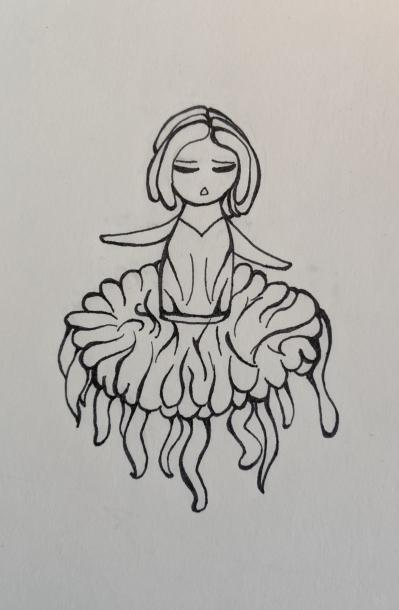
Starting the 30 day phyla art challenge, though I’ll mostly be drawing fantasy creature style humanoids I think.
Day 1: Porifera, based on this glass sponge
0 notes